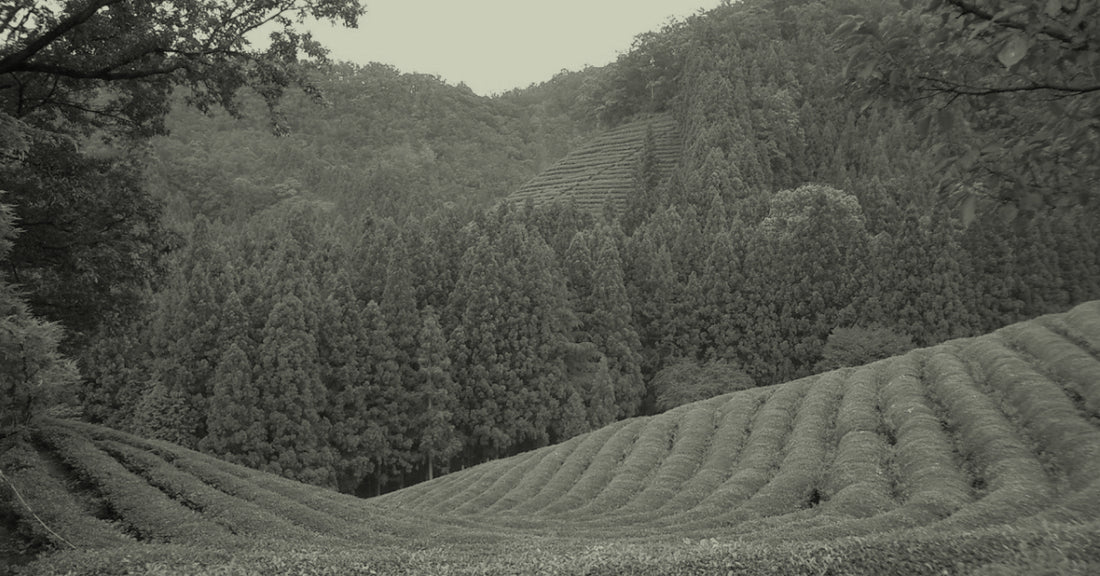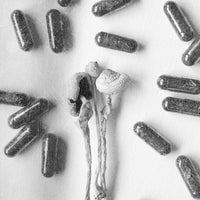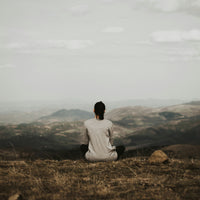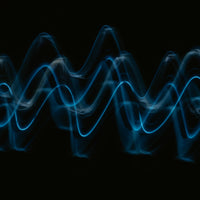Matcha—the powder of green tea leaves—has been called “the espresso of tea” in honor of the uncommonly powerful kick it can deliver, even in small doses. It contains far less caffeine than coffee, though, and many find the buzz that it gives to be smooth, mellow and jitter-free.
The practice of grinding tea leaves into powder goes back to ancient China, but Japan was the birthplace of the special shading technique that makes matcha what it is. Between the Zen priests, holy mountains and shogun and samurai warriors, the tale of this mossy-hued powder’s journey is as colorful as matcha itself.
Matcha Man
During a stay in China in the late 1100s, a Zen monk named Myōan Eisai (now known by many in Japan as “the father of tea”) learned a clever hack from his Buddhist brethren. While studying Zen at the Buddhist holy mountain Mount Tiantai, he found that green tea helped him step up his meditation game.
As functional medicine doctor Dr. Mary Pardee puts it, Zen monks like Eisai found that drinking green tea “promoted focus, but it wasn't a jittery focus. Instead, it was a calm alertness.” Recent studies have linked this to a combination of caffeine and L-theanine. Caffeine famously boosts energy and concentration, while L-theanine is known for a calming effect. Green tea contains both substances in copious amounts.
When Eisai returned to his homeland, he turned on the people of Japan to two things: the Chinese form of Zen Buddhism known as Linji (now known in Japan as Rinzai) and green tea. Legend has it that along with founding Japan’s first Zen temple, he planted Chinese green tea seeds in Japanese soil for the first time. He chose to plant the tea on a mountain peak called Mount Sefuri because of its resemblance to Mount Tiantai.
All this took place during what Buddhists call mappō, the last of three eras following the death of Gautama Buddha. The concept behind the era of mappō originates with Gautama Buddha himself, who foretold that mappō would be an "age of conflict" in which “the Pure Dharma will become obscured and lost.”
Eisai lived during a violent and turbulent time in Japan’s history. For him, this helped confirm the accuracy of Gautama Buddha’s prediction. Hoping to help quell the conflict, he introduced Japan’s nobility and warrior class—specifically the shogun and the samurai—to the benefits and pleasures of the tea ceremony via his two-volume book Kissa Yojoki: How to Stay Healthy by Drinking Tea.
Eisai also gave some tea seeds to the Buddhist monk Myōe Shonin. This led to the cultivation of green tea in the small city of Uji, which remains a hot spot for matcha to this day.
Sean Matteson, the CBDO of Matcha.com (where MUD\WTR gets the materials for its :rise Matcha blend), likens Uji’s role in matcha production to the French Bordeaux region’s role in wine production.
“It really has the perfect climate, with the tea being grown on the banks of the Uji river, with sandy soils and the perfect consistent temperatures and humidity levels provided by the river,” he says. “There's some other star regions coming up now that are giving Uji a run for its money, but Uji is still the OG best matcha growing region, hands down.”
Zen and the Art of Tea-making
In the 15th century, Japanese farmers began developing a process known as Tana, in which green tea plants are covered under a straw roof for shading as they’re growing. This was originally a way to keep the plants’ leaves from being destroyed by the wind, but the farmers discovered that the resultant absence of direct sunlight imbued the leaves with a richer, sweeter flavor. The Tana method also increased the caffeine content in the tea and maximized its benefits. This is what led to the advent of matcha as we now know it: the ultra-fine powder of green tea leaves that have been shaded, steamed, dried and ground.
As Japanese culture embraced the use of matcha, a Zen Buddhist named Murata Jukō consolidated various elements of rituals that warriors and monks had been using for nearly 1,000 years. The end result was the matcha tea ceremony. The Zen master Sen no Rikyū helped popularize this ritual and establish its four key pillars: harmony (wa), respect (kei), purity (sei) and tranquility (jaku).
Being a rare commodity, green tea was something of a status symbol in Sen no Rikyū’s time. As such, the matcha tea ceremony began as a ritual for the elite. Over time, its use became increasingly widespread.
The tea ceremony is still an important part of Japanese culture. However, according to Matcha.com’s COO, Nick Noble, it is no longer as prevalent as it once was.
“People don't do [tea ceremonies] everyday,” he says. “It's still [a custom], but it's much more modern now in the sense that anyone can whip up a quick bowl of matcha. It doesn't have to be done in a traditional manner.”
Big in America
This easy, quick matcha preparation Noble mentions has helped create the spike in matcha use among Westerners that we see today.
“Sales of matcha have increased a staggering fivefold in the last 25 years,” Matteson points out. “I think that really speaks to the fact that people are burning out, and people are increasingly looking for a more sustainable source of energy.”
Matteson of Matcha.com says when the website’s cofounder, Dr. Andrew Weil, is asked if he drinks coffee, he replies: “I don't do hard drugs.”
The relatively low caffeine content in matcha is just one of the things that sets it apart from coffee. Unlike coffee, matcha naturally modulates the release of caffeine, making for a slow, sustained, time-released energy boost. The energy that it brings is a calm, focused one, without the nasty crash that often follows a coffee high.
“There's no daily plant ally energy source that I’ve found that produces a more stable effect,” Matteson says of matcha.
Damon Orion is a writer, musician, artist, and teacher based in Santa Cruz, Calif. He has written for Revolver, Guitar World, Spirituality & Health, Classic Rock, High Times and other publications. Read more of his work at damonorion.com.
Read more: 7 Proven Ways Matcha Tea Improves Your Health
Read more: Feelin Lucky Matcha Bliss Mud Balls




